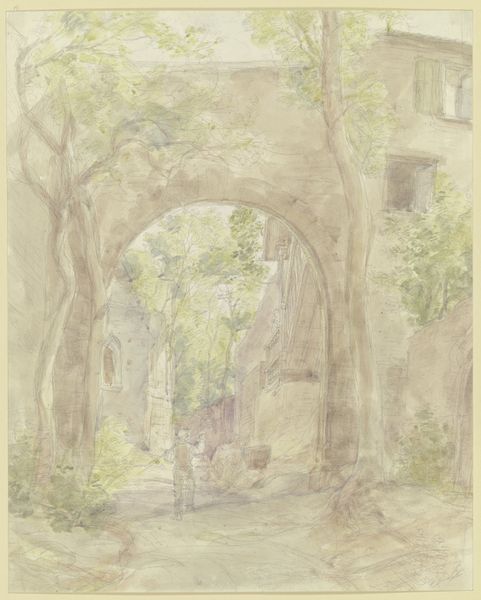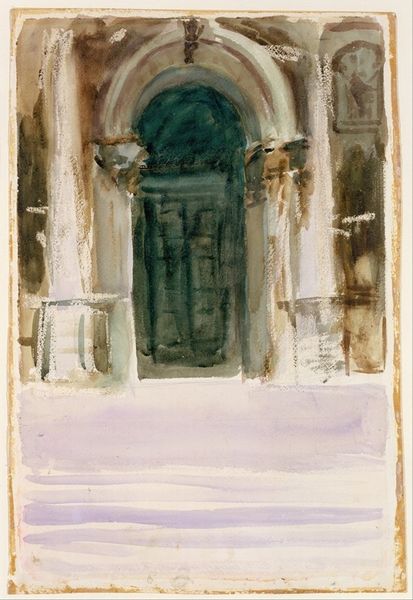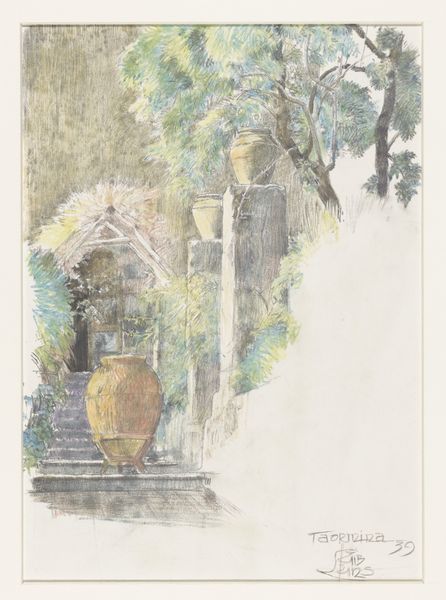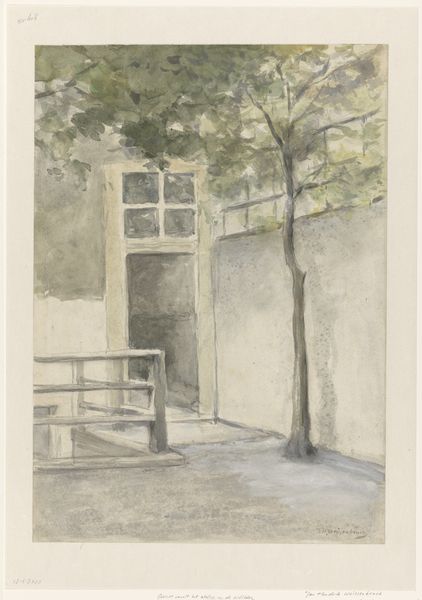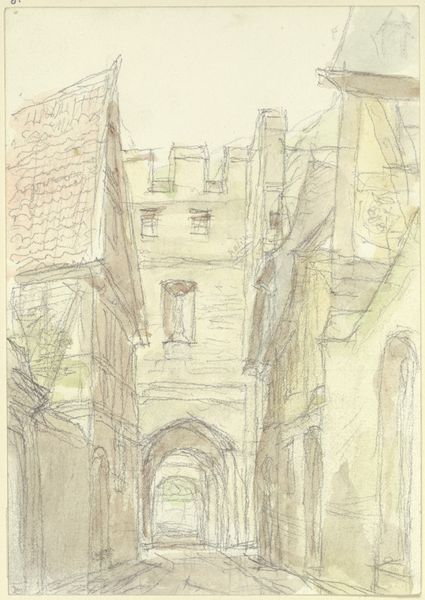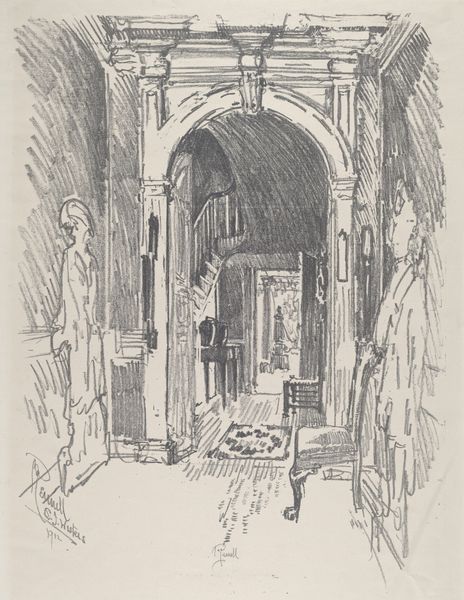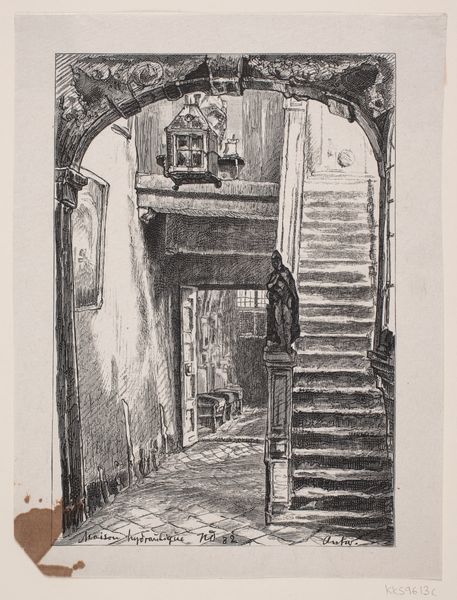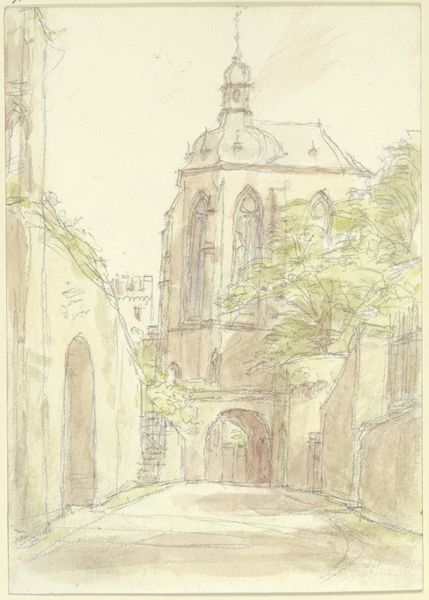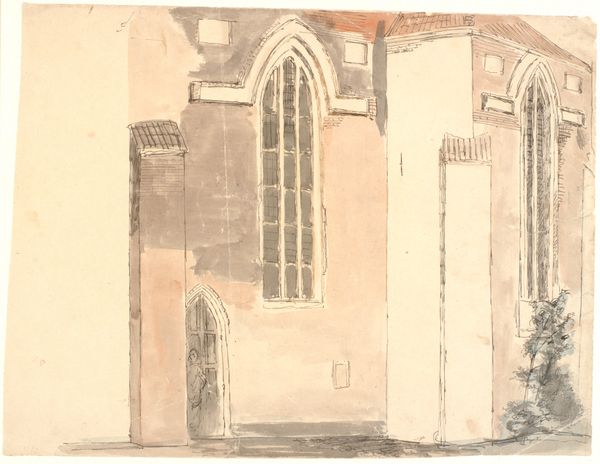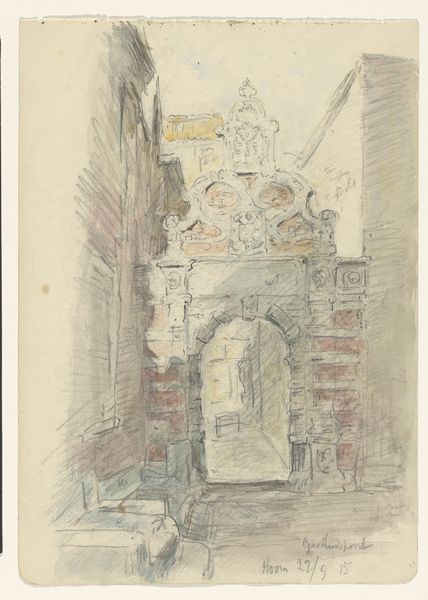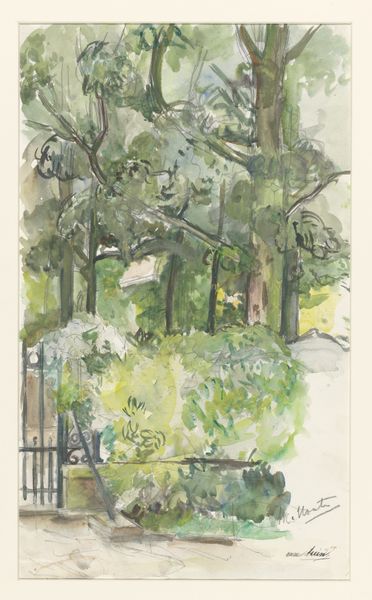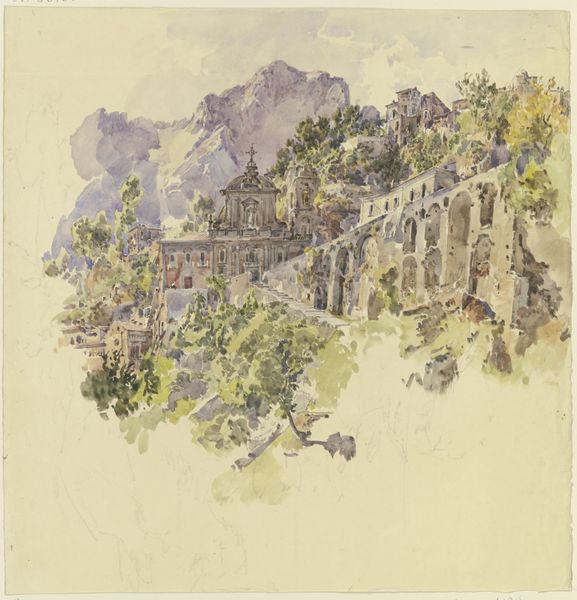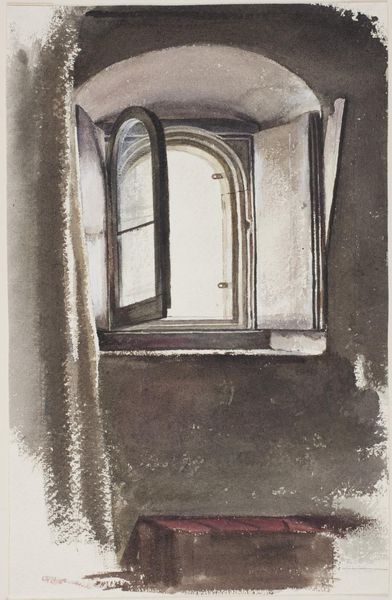
#
landscape illustration sketch
#
toned paper
#
water colours
#
handmade artwork painting
#
personal sketchbook
#
watercolour bleed
#
watercolour illustration
#
mixed medium
#
sketchbook art
#
watercolor
Dimensions: height 372 mm, width 268 mm
Copyright: Rijks Museum: Open Domain
Curator: This is Martin Monnickendam’s “Poortje in S. Miniato,” created in 1932. It appears to be watercolor and perhaps mixed media on toned paper. Editor: The quick washes of color really convey the bright, almost bleached light of Italy, while the architecture frames a lush view, making it seem both accessible and just out of reach. Curator: Indeed, Monnickendam was prolific in capturing scenes across Europe, including many of Italian architecture and light. I'm especially drawn to how the texture of the paper plays off of the watercolour bleed effect; this texture creates a grainy appearance throughout, imbuing the work with a palpable sense of atmosphere. Editor: I’m curious about how such an image circulates and becomes valued. This work is labelled a “personal sketchbook” piece; I'm intrigued by its journey from private observation to a public piece worthy of display, transforming labor into ‘art’. Who decides what is valuable or ‘museum worthy’? Curator: That touches on the power structures within the art world itself! Looking at this work though, its status is less important than its technique; the artist utilizes swift execution to establish the scene effectively, hinting at both its architecture and broader urban or even agricultural placement. It captures that critical moment in observing the real. Editor: And I would counter that technique cannot be fully separated from these social and institutional structures! The skill in applying the watercolor is evident. This 'sketchbook art', becomes a curated object and shifts the reading and social perception from the personal or mundane, to 'high art', where it finds public validation through viewings such as this. It challenges the labor and inherent artistry that might otherwise be dismissed. Curator: An important consideration; and with that, we see how this small watercolour, a mere snippet in time, raises many different facets on how and why we interpret art. Editor: Absolutely, it makes one consider the evolution of an image and object from private use, through a museum and then impacting culture itself.
Comments
No comments
Be the first to comment and join the conversation on the ultimate creative platform.
